Last Chance to Catch NYC's Holiday Notalgia Train
We met the voices of the NYC subway on our nostalgia ride this weekend!


A very special maritime addition has hit the waters in New York City: A GlassBarge from The Corning Museum of Glass opened at ONE°15 Brooklyn Marina at Brooklyn Bridge Park yesterday morning, here for ten days on the first leg of its four month state wide journey along the historic waterways of New York State. The GlassBarge, though not made of glass itself, contains patented, boat-tested all-electric glassmaking equipment for live glass blowing demonstrations.
There is a cultural, historical and infrastructural goal with the GlassBarge, to support and emphasize the important role New York’s waterways “have shaped the state’s industry, culture and community,” to better acquaint downstate New Yorkers with The Corning Museum of Glass, a preeminent center for glass innovation that contains more than 50,000 works of glass across more than 3,500 years of history, to celebrate the 200th anniversary of the construction of the Erie Canal, which has many traces still remaining right here in New York City, and the centennial of the commemoration of the Barge Canal in New York State.

The 30 x 80 foot GlassBarge, designed uniquely for glass blowing, will be flying the flag of the South Street Seaport Museum, accompanied by the C.L. Churchill tugboat, built in 1964, and the Louis McClure, a replica of an 1862 canal barge, both which are in the collection of the Lake Champlain Maritime Museum. Along the Erie Canal, the South Street Seaport’s historic tugboat, the W.O. Decker, will be accompanying the GlassBarge.
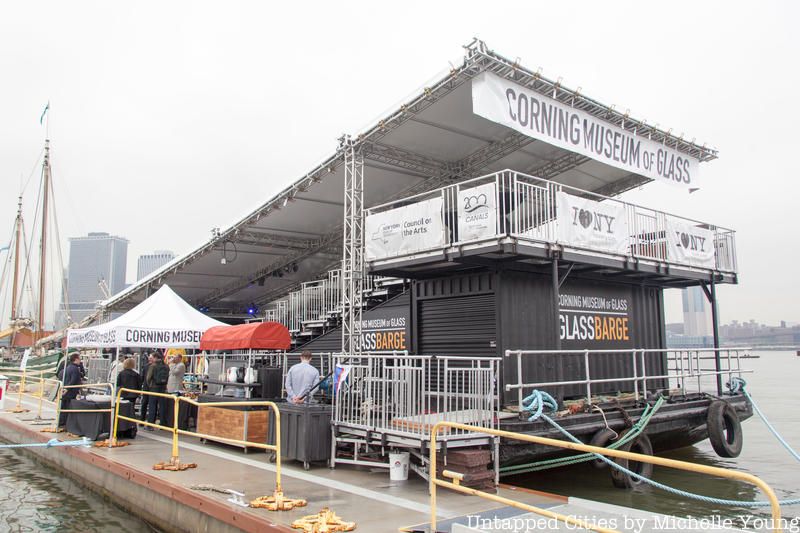
As Karol Wight, President and Executive Director of The Corning Museum of Glass told the press audience yesterday at the opening (which included a “ribbon” cutting of a long ribbon of hot glass and a live glass blowing demonstration!), the story of glass actually began in Brooklyn, steps away from Brooklyn Bridge Park at the site what is now Adam Yauch Park. There, the Brooklyn Flint Glass Company had its start in the beginning of the 19th century and developed a patent for glass window blinds. Its later owners, Amory Houghton, Sr. and Jr., were enticed to move it to upstate New York in 1868, in search of cheaper operational costs, as well as closer access to the Erie Canal.
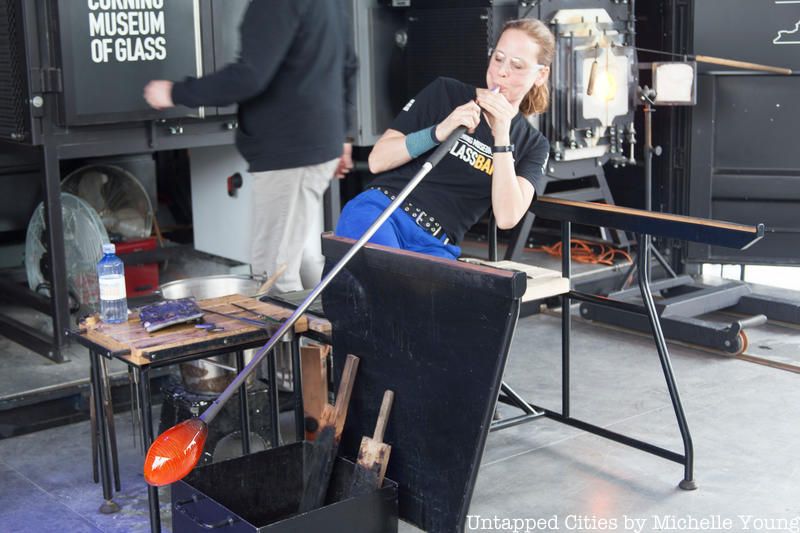

The company was renamed the Corning Flint Glass Company, and later become Corning Glass Works, and then Corning, Inc. It would be responsible for many cutting edge innovations, building Thomas Edison‘s first electric lightbulb, developing products for Pyrex, fiber for telecommunications, and flat screen displays. “The 1868 journey on New York’s waterways set in motion 150 years of innovation in Corning that has shaped the modern world,” said Rob Cassetti, Senior Director of Creative Strategy and Audience Engagement for The Corning Museum of Glass. Captain Jonathan Boulware, President & CEO of the South Street Seaport Museum, reminded the audience of the forward thinking initiative the Erie Canal was for its time – “a public work that would materially benefit [the state] in ways they couldn’t yet imagine,” and put a call to action for infrastructure investments now that can set the stage for the next few hundred years.
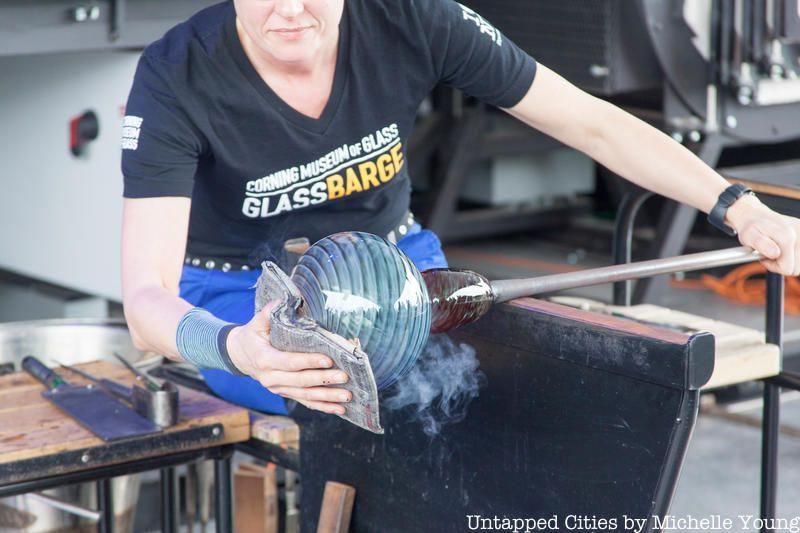

The GlassBarge is to operate as part industrial machine, part classroom – a floating studio that will go to thirty communities from now until the end of September. It will be at ONE°15 Brooklyn Marina until May 28th, and will call along six port cities and towns along the Hudson River Valley in June, then heading along the Erie Canal through August, and hitting the Finger Lakes region in September with a celebratory arrival in Corning on September 22nd.
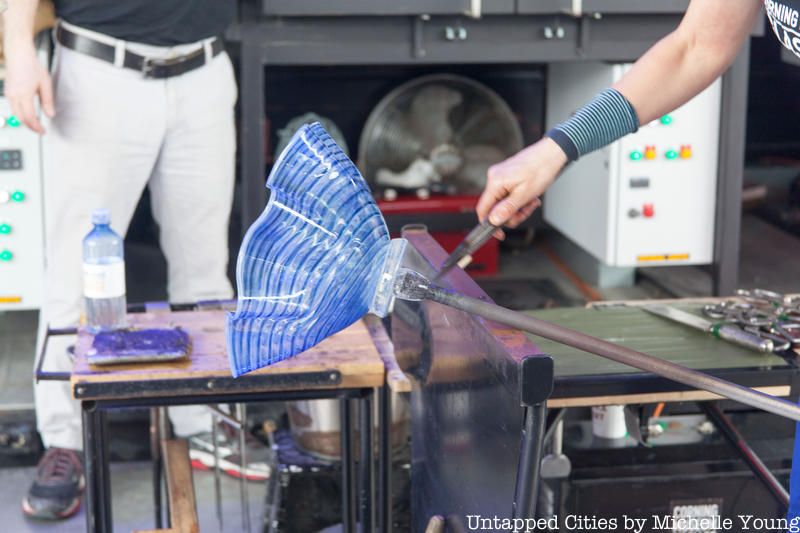
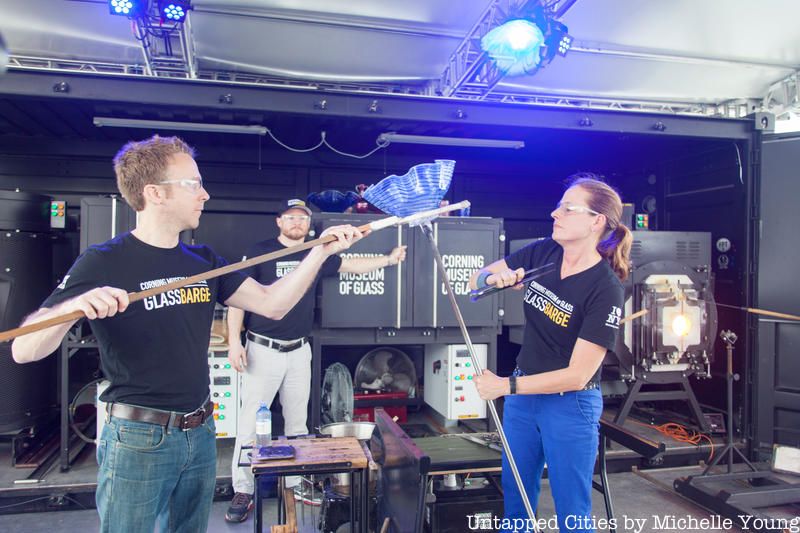




The GlassBarge was made possible through grants from I LOVE NEW YORK, New York State Council for the Arts, and New York State Canal Corporation through Governor Andrew Cuomo’s Regional Economic Development Council Initiative. You can use the PastPort app to follow the GlassBarge journey and learn about the points of interest along the route.
Next, check out 10 Traces of the Erie Canal in New York City.
Subscribe to our newsletter